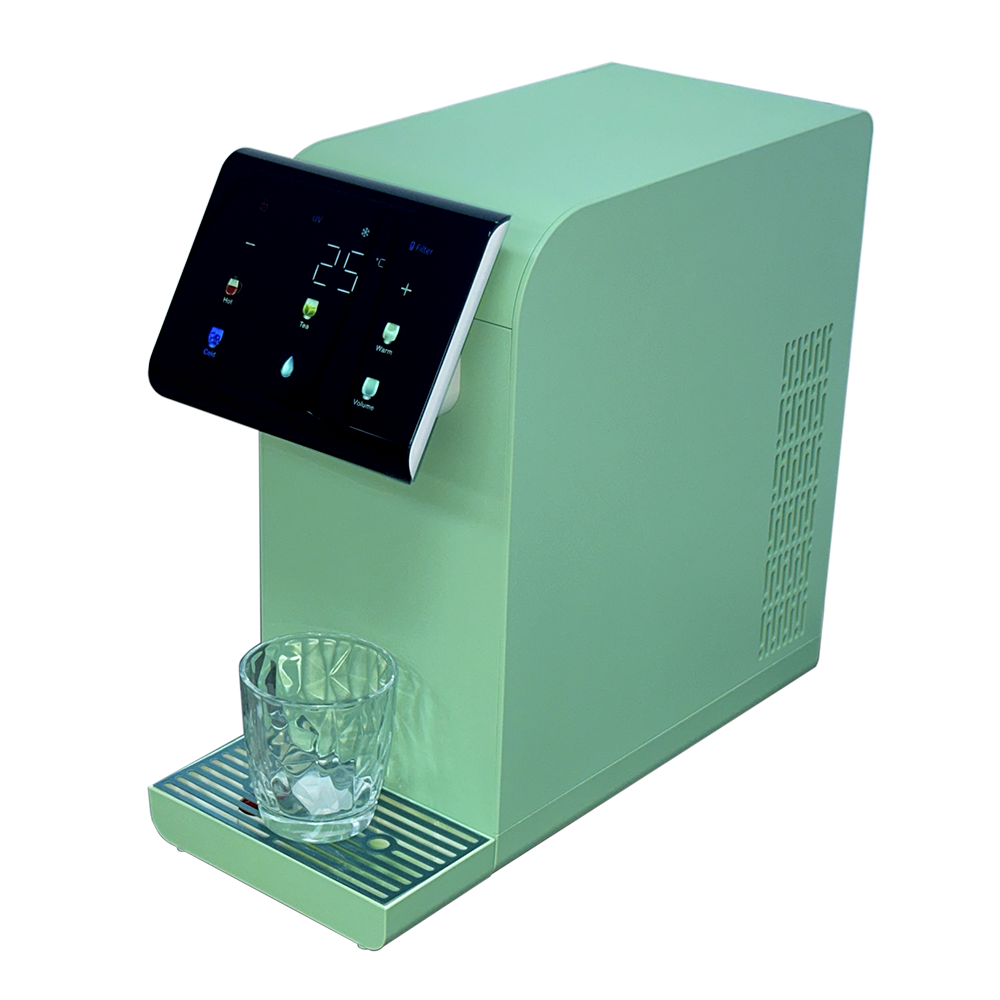
 Want filtered water without the wait of a pitcher or the commitment of an under-sink system? Faucet-mounted water filters are the instant-gratification solution for cleaner, better-tasting water right from your tap. This guide explains how they work, which models deliver, and how to choose one that fits your faucet and your life.
Want filtered water without the wait of a pitcher or the commitment of an under-sink system? Faucet-mounted water filters are the instant-gratification solution for cleaner, better-tasting water right from your tap. This guide explains how they work, which models deliver, and how to choose one that fits your faucet and your life.
Why a Faucet Filter? Instant Filtered Water, Zero Installation Hassle
[Search Intent: Problem & Solution Awareness]
Faucet filters hit the sweet spot between convenience and performance. They’re ideal if you:
Want filtered water immediately without filling a pitcher
Rent your home and cannot modify plumbing
Have limited counter or under-sink space
Need a budget-friendly option ($20-$60) with solid filtration
Simply screw one onto your existing faucet, and you get on-demand filtered water for drinking, cooking, and rinsing produce.
How Faucet-Mounted Filters Work: Simplicity Itself
[Search Intent: Informational / How It Works]
Most models operate with a simple diverter valve and carbon block filter:
Attachment: Screws onto your faucet’s threads (most standard sizes included).
Diversion: A switch or lever directs water either:
Through the filter for clean drinking water (slower flow)
Around the filter for regular tap water (full flow) for washing dishes.
Filtration: Water is forced through an activated carbon filter, reducing contaminants and improving taste.
What Faucet Filters Remove: Setting Realistic Expectations
[Search Intent: "What do faucet water filters remove"]
✅ Effectively Reduces ❌ Generally Does NOT Remove
Chlorine (Taste & Odor) Fluoride
Lead, Mercury, Copper Nitrates / Nitrites
Sediment, Rust Bacteria / Viruses
VOCs, Pesticides Dissolved Solids (TDS)
Some Pharmaceuticals (NSF 401) Hardness (Minerals)
The Bottom Line: Faucet filters are champions at improving taste by removing chlorine and reducing heavy metals. They are not a complete purification solution for non-municipal water sources.
Top 3 Faucet-Mounted Water Filters of 2024
Based on filtration performance, compatibility, flow rate, and value.
Model Best For Key Features / Certifications Filter Life / Cost
Pur PFM400H Most Faucets NSF 42, 53, 401, 3-setting spray, LED indicator 3 months / ~$25
Brita Basic Budget Buy NSF 42 & 53, Simple on/off diverter 4 months / ~$20
Waterdrop N1 Modern Design High Flow Rate, 5-Stage Filtration, Easy Install 3 months / ~$30
The True Cost: Faucet Filter vs. Bottled Water
[Search Intent: Justification / Value Comparison]
Upfront Cost: $25 – $60 for the unit
Annual Filter Cost: $80 – $120 (replacing every 3-4 months)
Vs. Bottled Water: A family spending $20/week on bottled water will save over $900 annually.
Cost-Per-Gallon: ~$0.30 per gallon vs. bottled water’s $1.50+ per gallon.
5-Step Buying Checklist
[Search Intent: Commercial - Buying Guide]
Check Your Faucet: This is the most important step. Is it standard threaded? Is there enough clearance between the faucet and sink? Pull-down faucets are often incompatible.
Identify Your Needs: Just better taste (NSF 42) or lead reduction too (NSF 53)?
Consider the Design: Will it fit your faucet without hitting the sink? Does it have a diverter for unfiltered water?
Calculate Long-Term Cost: A cheaper unit with expensive, short-life filters costs more over time.
Look for a Filter Indicator: A simple light or timer takes the guesswork out of replacements.
Installation & Maintenance: It’s Easier Than You Think
[Search Intent: "How to install faucet water filter"]
Installation (2 Minutes):
Unscrew the aerator from your faucet.
Screw the provided adapter onto the threads.
Snap or screw the filter unit onto the adapter.
Run water for 5 minutes to flush the new filter.
Maintenance:
Replace the filter every 3 months or after filtering 100-200 gallons.
Clean the unit periodically to prevent mineral buildup.
FAQ: Answering the Most Common Questions
[Search Intent: "People Also Ask"]
Q: Will it fit my faucet?
A: Most fit standard threaded faucets. Check the product’s compatibility list. If you have a pull-down, sprayer, or commercial-style faucet, it likely will NOT fit.
Q: Does it slow down the water pressure?
A: Yes, significantly. The flow rate for filtered water is much slower (often ~1.0 GPM) than for regular tap water. This is normal.
Q: Can I use it for hot water?
A: No. Never. The plastic housing and filter media are not designed for hot water and can be damaged, leaking or reducing filtration effectiveness.
Q: Why does my filtered water taste weird at first?
A: New filters have carbon dust. Always flush them for 5-10 minutes before first use to avoid “new filter taste.”
The Final Verdict
The Pur PFM400H is the best overall choice for most people due to its proven certifications, multiple spray settings, and widespread compatibility.
For those on a tight budget, the Brita Basic model delivers certified filtration at the lowest possible price point.
Next Steps & Pro Tip
Look at Your Faucet: Right now, check if it has standard external threads.
Check for Sales: Faucet filters and multipacks of replacements are often discounted on Amazon.
Recycle Your Filters: Check the manufacturer’s website for recycling programs.
Pro Tip: If your faucet isn’t compatible, consider a countertop filter that connects via a short hose to your faucet—it offers similar benefits without the threading issue.
Ready to Try a Faucet Filter?
➔ Check Latest Prices and Compatibility on Amazon
Post time: Sep-17-2025

